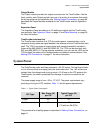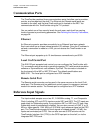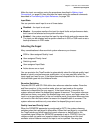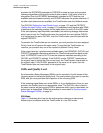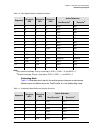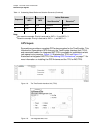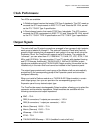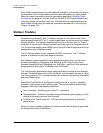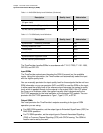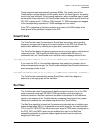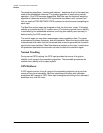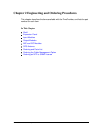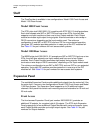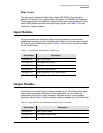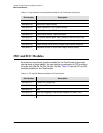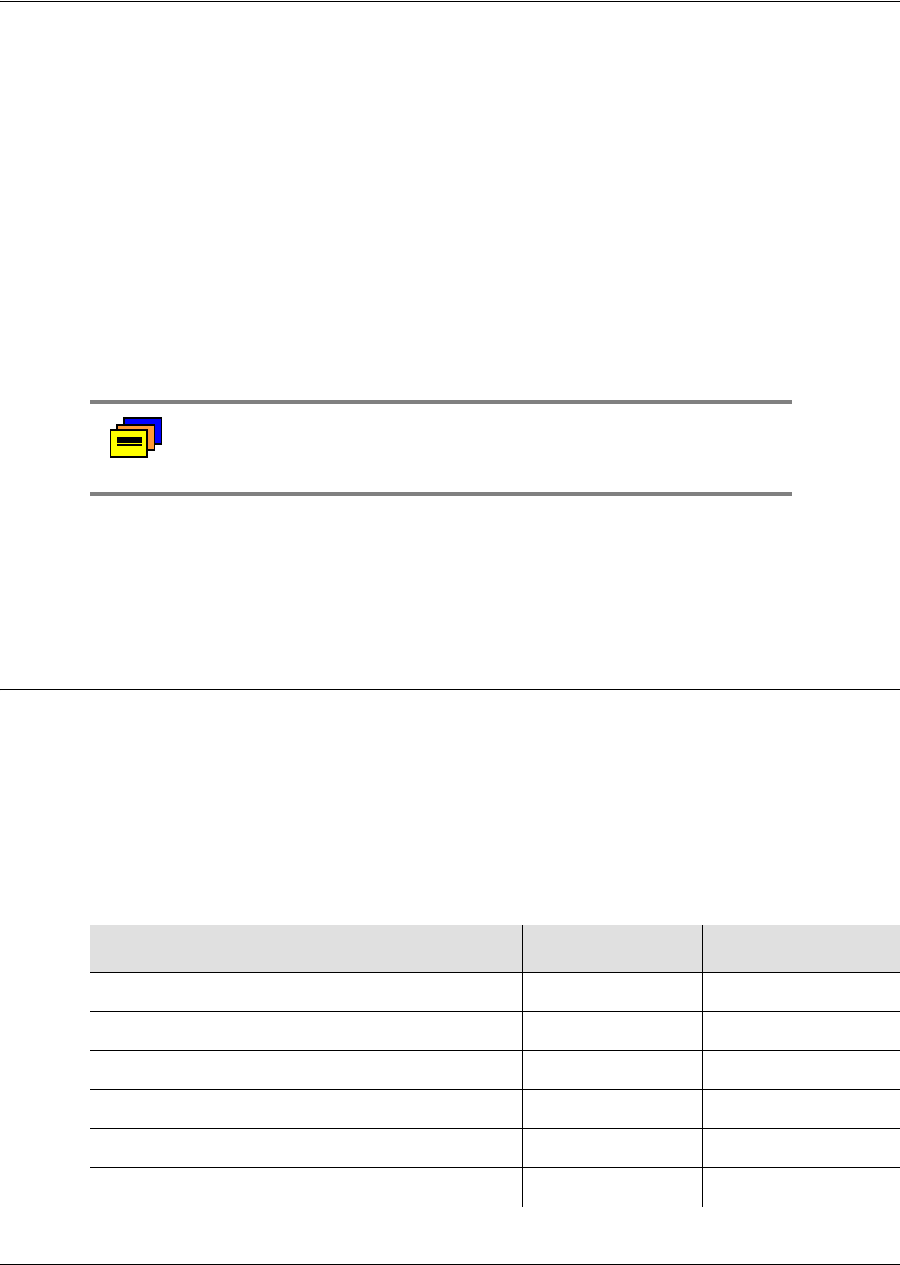
097-58001-02 Revision G – April 2008 TimeProvider User’s Guide 41
Chapter 1 Overview of the TimeProvider
Alarms
Alarms
The TimeProvider uses alarms to notify you when certain conditions are
deteriorating
below user-specified levels. These alarms are indicated by shelf and card status
lamps (LEDs) and by TL1 messages reported over the serial/EIA-232 or LAN
communication ports. In addition, the input panel has a connector that provides
contact closures to activate external alarms.
You can provision the alarm level for most alarms to one of the following levels:
non-reportable (NR), non-alarm event (NA), minor (MN), major (MJ), or critical (CR).
Alarms related to the inputs are special cases; you can only provision input alarms
for minor, major, or critical. To help prevent spurious or transient input alarms, a
delay timer (FLTDELAY) allows you to provision a waiting period that starts after the
alarm condition occurs; the alarm is set at the end of the period. A similar timer
(CLRDELAY) clears the alarm after the alarm condition is no longer present.
For more information on connecting alarms, see Making Alarm Connections, on
page 70. For information on provisioning alarm levels, see Provisioning the Alarm
Levels, on page 126.
Synchronization Status Messages (SSMs)
The TimeProvider supports input and output SSMs. SSMs provide a method for
providing clock quality information to any equipment that uses synchronization
inputs. Table 1-4 describes the ANSI SSM values and the traceability associated
with each value. Table 1-5 describes the ITU SSM values and the traceability
associated with each value.
Recommendation: To prevent Non-Service Affecting LOS
alarms, Symmetricom recommends that you provision unused
inputs to the Disabled state.
Table 1-4. ANSI SSM Quality Level Definitions
Description Quality Level Abbreviation
Stratum 1 Traceable 1 PRS
Synchronized – traceability unknown 2 STU | UNK
Stratum 2 traceable 3 ST2 | TYPE II
Transit Node traceable 4 TNC | TYPE V
Stratum 3E traceable 5 ST3E | TYPE III
Stratum 3 traceable 6 ST3 | TYPE IV



